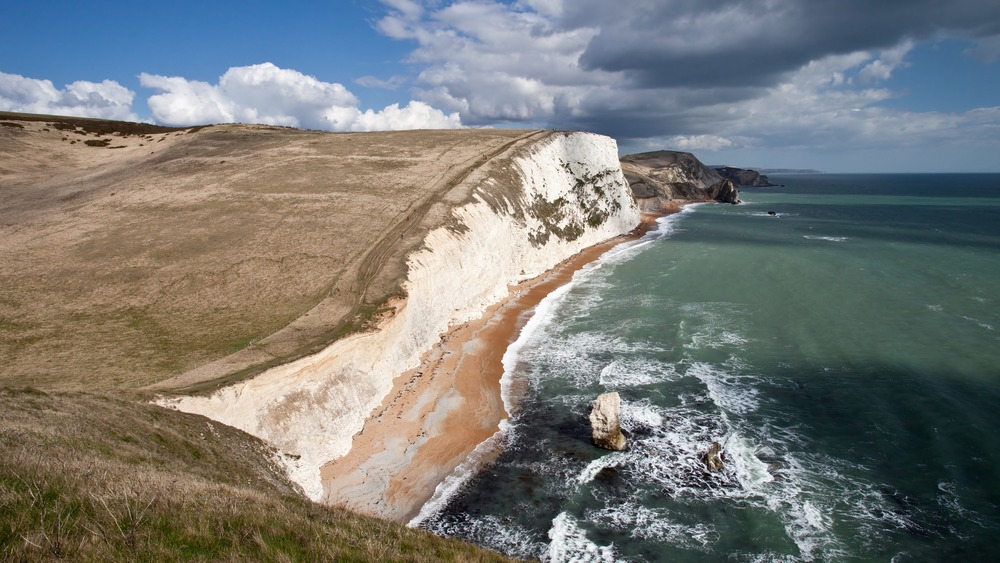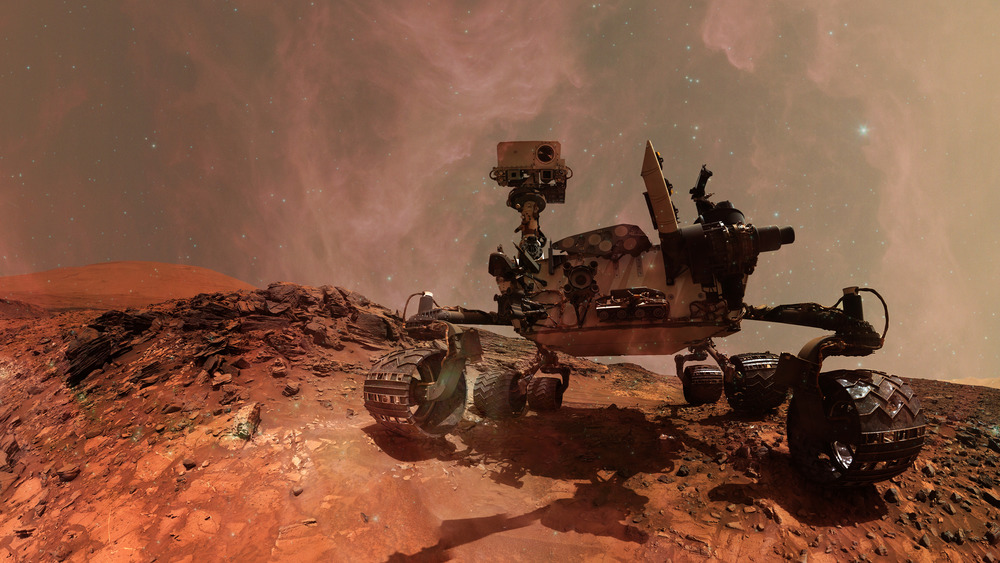How 19th-Century Paleontologist Mary Anning's Name Ended Up On Mars
Ultimately recognized by the Royal Society as one of the top 10 most influential British women scientists in history, Mary Anning's contributions to paleontology, geology, and anatomy often went overlooked and under-regarded during her life. Born in 1799 in Lyme Regis in Dorset, England, as Britannica tells us, to a working class family who lived near the seaside cliffs of the English Channel, Anning joined her father in his fossil-collecting ventures along the coast. Lyme Regis, as outlined in Lyme Regis Museum, is a world-renowned fossiliferous area along what is referred to as the "Jurassic Coast," a UNESCO World Heritage Site, as stated by the Jurassic Coast Trust. It's full of limestone and shale, and is rich not only in fossils of smaller animals like snails and mussels, but entire dinosaurs like ichthyosaurs and plesiosaurs. Around 1811, Anning herself discovered the world's first full ichthyosaur fossil in the region.
Anning, who had no formal education or training, was integral to those early days of "natural science." She not only transcended class barriers to eventually catch the attention of prominent individuals such as French zoologist Georges Cuvier and English geologist Adam Sedgwick, but also gender barriers that deemed her ventures unheard of. The UK's Natural History Museum shows us that she was also masterful at sketching her findings, which helped substantiate her skills and discoveries. She may have even influenced Charles Darwin's original theory of natural selection.
And in the end? Mary Anning made it all the way to Mars.
Taken to Mars in the spirit of universal exploration
As outlined on Space, Mars rover Curiosity landed on the red planet in 2012 to not only investigate the geology and climate, but ultimately determine if Mars was once capable of supporting life. The rover is equipped with a variety of sensors: spectrographic, radiative, atmospheric, and environmental. And of course, it also has a camera, which has been responsible for taking a host of stunning pictures perusable on the NASA website. Curiosity is NASA's most ambitious endeavor to explore Mars yet, as Nature describes.
So what better way to honor the spirits of exploration and inclusivity than to name some of Curiosity's drill holes after Anning? Even though Anning's findings influenced the course of scientific advancement, and she was credited for her findings by certain scientists, she still remained relatively unknown during her life. It wasn't until 1904, a full 57 years after her death in 1847, that women were admitted to the British Association for the Advancement of Science and the Geological Society of London, which during Anning's life set up an annuity for her.
And so, in NASA's own words, Curiosity drilled holes christened "Mary Anning," "Mary Anning 3," and "Groken" (the last named after a cliff in Shetland, Scotland) to, as the USGS reports, "remind us to include everyone in the endeavor of exploration." NASA, as the USGS also says, even named a camera target "Tray" after Anning's beloved dog.

